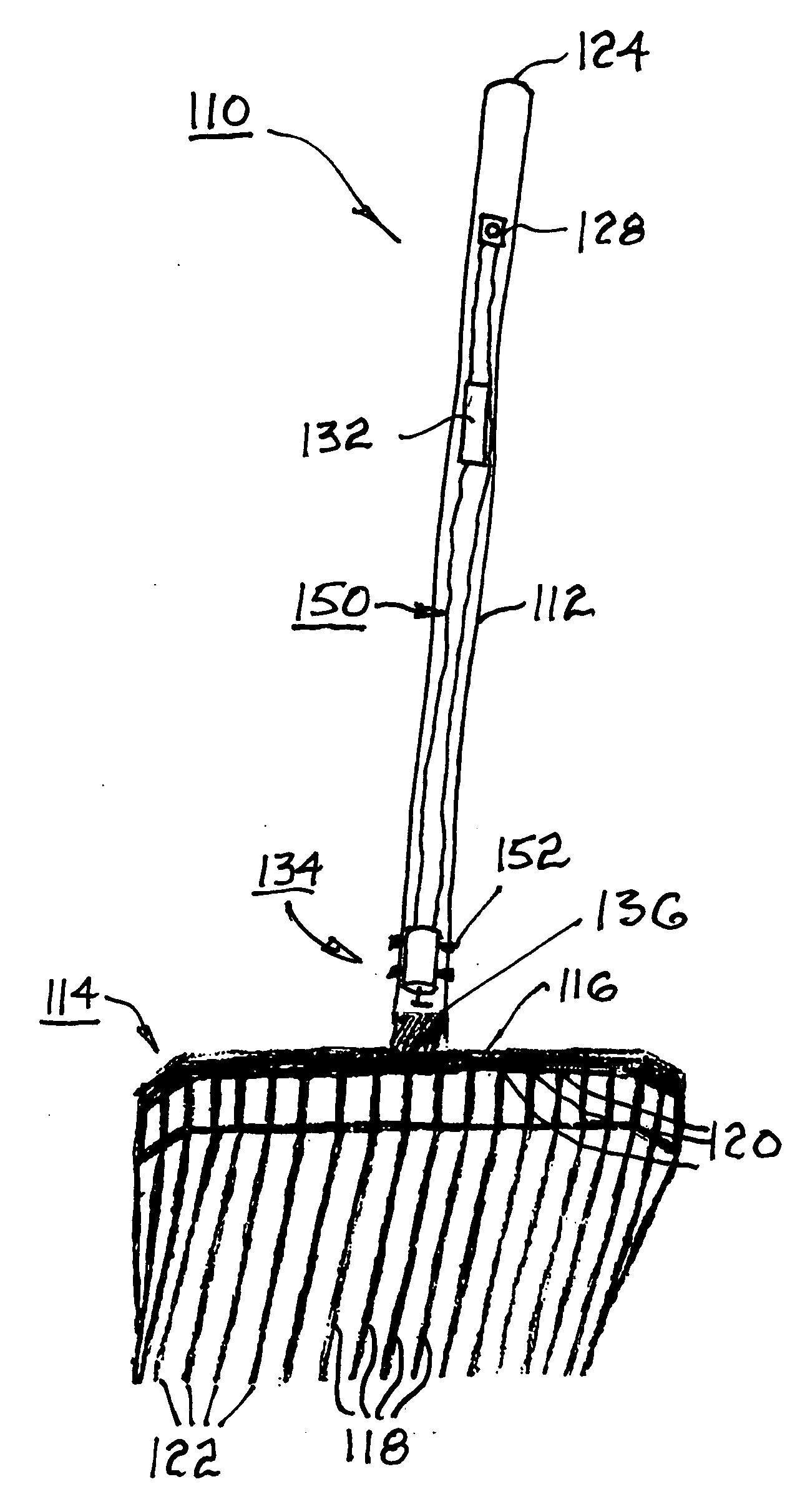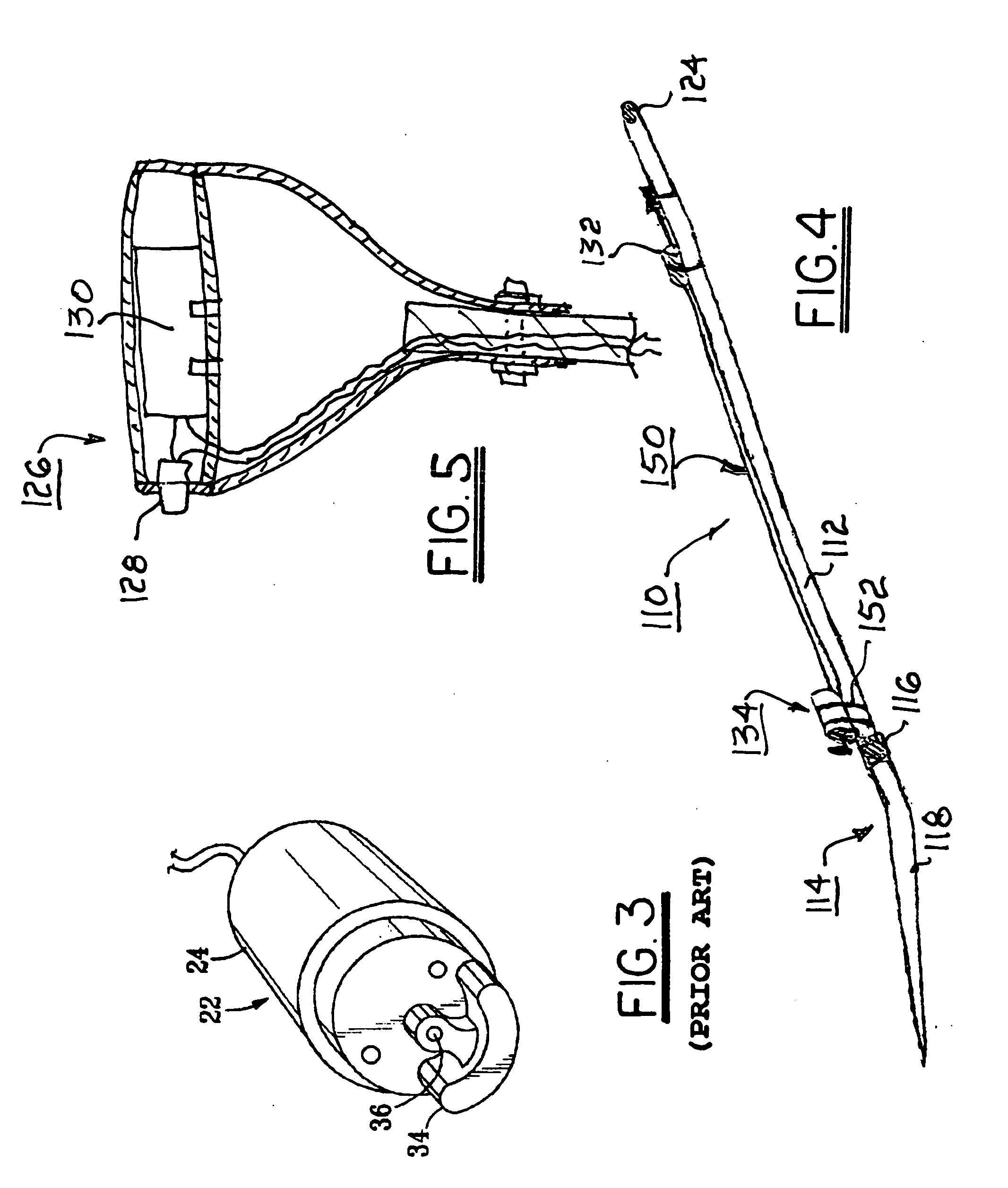Vibrating manure fork
a technology of which is applied in the field of vibrating manure forks and manure forks, can solve the problems of bedding costs, prior art manual processes, and cost of maintaining an animal, and achieve the effect of reducing the risk of injury
- Summary
- Abstract
- Description
- Claims
- Application Information
AI Technical Summary
Benefits of technology
Problems solved by technology
Method used
Image
Examples
Embodiment Construction
[0041] The benefits and advantages of the present invention will be better appreciated by first considering a similar prior art invention which is inferior to the present invention for easy separation of large-animal manure from non-soiled bedding.
[0042] Referring to FIG. 1, a prior art cat litter scoop device 10 as disclosed in U.S. Pat. No. 6,022,058 is formed of molded plastic and comprises a forward scoop portion 12 and a handle portion 14. The forward scoop portion 12 is defined by a slotted bottom wall 16 and slotted side walls 18 and a slotted rear wall 19 which project upwardly from the bottom wall 16. The bottom wall 16 defines a forwardly disposed transverse row of longitudinally extending parallel slots 16′, a second transverse row of longitudinally extending parallel slots 16″, and a plurality of aligned slots 16′″ laterally spaced from the rows of slots 16′ and 16″. Elongated slots 16″ are greater in length than 16′ so as to define a solid transverse web 21 extending a...
PUM
 Login to View More
Login to View More Abstract
Description
Claims
Application Information
 Login to View More
Login to View More - R&D
- Intellectual Property
- Life Sciences
- Materials
- Tech Scout
- Unparalleled Data Quality
- Higher Quality Content
- 60% Fewer Hallucinations
Browse by: Latest US Patents, China's latest patents, Technical Efficacy Thesaurus, Application Domain, Technology Topic, Popular Technical Reports.
© 2025 PatSnap. All rights reserved.Legal|Privacy policy|Modern Slavery Act Transparency Statement|Sitemap|About US| Contact US: help@patsnap.com



